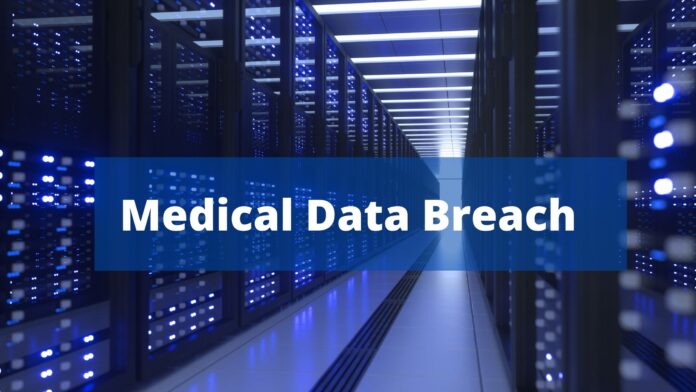What is a data breach, why is it so dangerous, and how can technology prevent medical data from falling into the wrong hands?
A data breach is the name for an instance where confidential and protected information is accessed without proper authorisation. Because of the highly sensitive nature of patient data, NHS data breaches can be incredibly damaging for both the organisation, staff, and patients.
To learn how technologies can protect medical records, take a look at the article below.
Why is medical data a target for cyber criminals?
There are many reasons why people can benefit from stealing medical data breaches. For example…
- Patient information is worth a lot of money on the black market. In fact, it has been estimated that patient information can be sold for ten times more than credit card information.
- The sheer number of medical devices within a hospital makes them easy to attack.
- Staff need remote access to data, so it becomes much more vulnerable.
- The technology being used is often outdated. This is because it takes so much time for staff to adapt to new technologies, distracting from their work.
- Very few staff members are trained on online risks.
- Medical data needs to be sharable, putting it at a higher risk of attack.
How can a data breach happen?
There are many ways a data breach can occur, but the most common causes are phishing, malware, and data theft. Let’s take a look at these in more detail…
Phishing
This is when an attacker pretends to be an organisation or person who can be trusted, in order to convince the victim to click on a link, reply to a message, or open an email. Cybercriminals often use phishing to steal the user’s data, login details etc.
Malware
Malware is a type of software that is made to damage, access or disrupt unauthorised data on a computer system. This can be done using a virus, ransomware, and spyware.
Data theft
Some of the many types of data theft include:
- Password cracking
- Lack of encryption
- Careless privacy practices
- The theft of a device
Data theft involves stealing digital information, and is often caused by staff members in either human error or privilege abuse.
What are the consequences of a data breach?
A medical data breach can have devastating impacts on both the company, staff, and patients:
- Financially, data breaches within health care cost around £5.2 million a year, due to compensation fees and reinforcing digital security. This is money that could go towards medical care, equipment, staff wages etc.
- A data breach can also cause an enormous loss of faith in organisations like the NHS, leading to people not seeking medical aid when they need it.
- Healthcare professionals and their patients will also suffer in the event of a data breach. Staff will have to manage the breach and work to prevent another incident, taking time away from patients. This increase in workload means that staff must work twice as hard.
- In the event that a staff member was responsible for the data breach, whether intentionally or not, they may lose their career. In some instances, a data breach can happen through something as simple as not logging out of a computer.
- From a patient point of view, a data breach is an invasion of privacy and can lead to mistrust in healthcare services, identify theft, fraud, and loss of control over personal data, to name a few.
Can technology help prevent data breaches?
New technologies are constantly being developed to help prevent data breaches, however, with the introduction of each new technology, attackers are adapting. Even so, medical data is incredibly sensitive and needs to be protected. An example of some technologies that are being used to protect data are:
- Cloud-based software
One of the common causes of data breaches is outdated software. Cloud-based software is a great way to combat this, as it ensures everything is up to date and hosted on a remote cloud server.
- Biometric authentication
When choosing a password, people avoid picking something longer and more complex, even though it’s more secure. A more secure way of protecting devices is with biometric authentication. Even though it’s not always practical using fingerprint or facial recognition, it is a fast and effective way to secure a device.
The drawbacks to this type of technology are that some people consider biometric authentication an invasion of privacy. It can also be difficult for co-workers to share passwords.
- Artificial intelligence (AI)
AI is fast becoming one of the most valuable forms of protection against data breaches. It works by analysing patterns in order to identify malware, phishing, and other threats before they attack, and alerting users.
It can protect medical data, reducing data breaches, however, AI technology does come with some drawbacks. Skilled cybercriminals can take advantage of the technology to analyse malware and make more precise attacks.
- Email encryption
Emails can be very vulnerable to cyberattacks like phishing or interception, as they travel through the email network. By encrypting emails with transport layer security or end-to-end encryption, organisations can prevent emails from being read before they are delivered.
Transport layer security can protect emails as they move through the email system, whereas end-to-end provides protection at every stage of the delivery and only allows the intended reader access.
By using email encryption technology, it is very hard for a cyber-attack to take place.
Are these technologies helping to prevent data breaches or making it worse?
Despite the many benefits of technology aiming to prevent medical data breaches, there are many challenges.
Whilst measures like AI and email encryption do help protect sensitive data, cybercriminals have been able to take advantage of these technologies to find new ways to steel sensitive data.
So far, there is not an all-powerful way to protect medical data from attackers, as, so far, they have been able to adapt to each new line of defence. However, by utilising these technologies, data breaches are significantly less likely to be successful, protecting the patients and staff that will be affected by more frequent breaches.
Please be advised that this article is for general informational purposes only and should not be used as a substitute for advice from a trained data security professional. Be sure to consult a professional if you want to advice on any data breaches and security. We are not liable for risks or issues associated with using or acting upon the information on this site.
Write and Win: Participate in Creative writing Contest and win fabulous prizes.














